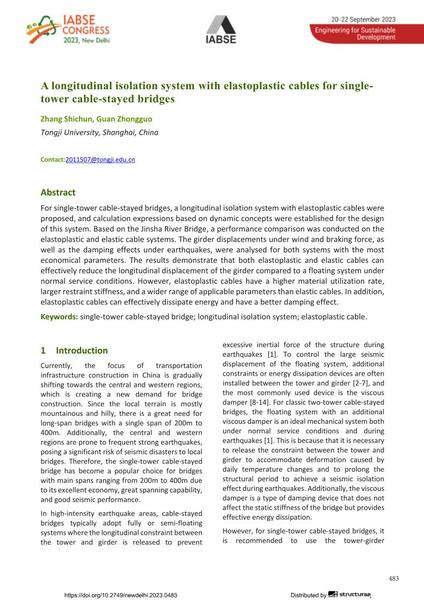A longitudinal isolation system with elastoplastic cables for single-tower cable-stayed bridges

|
|
|||||||||||
Bibliografische Angaben
| Autor(en): |
Zhang Shichun
(Tongji University, Shanghai, China)
Guan Zhongguo (Tongji University, Shanghai, China) |
||||
|---|---|---|---|---|---|
| Medium: | Tagungsbeitrag | ||||
| Sprache(n): | Englisch | ||||
| Tagung: | IABSE Congress: Engineering for Sustainable Development, New Delhi, India, 20-22 September 2023 | ||||
| Veröffentlicht in: | IABSE Congress New Delhi 2023 | ||||
|
|||||
| Seite(n): | 483-491 | ||||
| Anzahl der Seiten (im PDF): | 9 | ||||
| DOI: | 10.2749/newdelhi.2023.0483 | ||||
| Abstrakt: |
For single-tower cable-stayed bridges, a longitudinal isolation system with elastoplastic cables were proposed, and calculation expressions based on dynamic concepts were established for the design of this system. Based on the Jinsha River Bridge, a performance comparison was conducted on the elastoplastic and elastic cable systems. The girder displacements under wind and braking force, as well as the damping effects under earthquakes, were analysed for both systems with the most economical parameters. The results demonstrate that both elastoplastic and elastic cables can effectively reduce the longitudinal displacement of the girder compared to a floating system under normal service conditions. However, elastoplastic cables have a higher material utilization rate, larger restraint stiffness, and a wider range of applicable parameters than elastic cables. In addition, elastoplastic cables can effectively dissipate energy and have a better damping effect. |
||||
